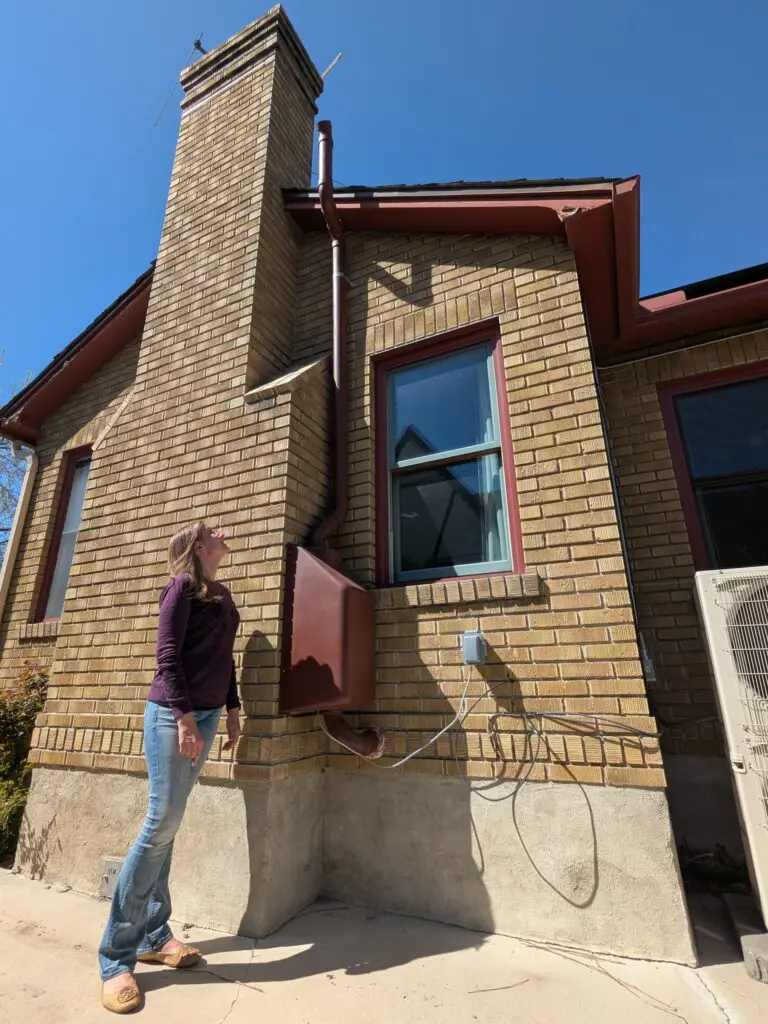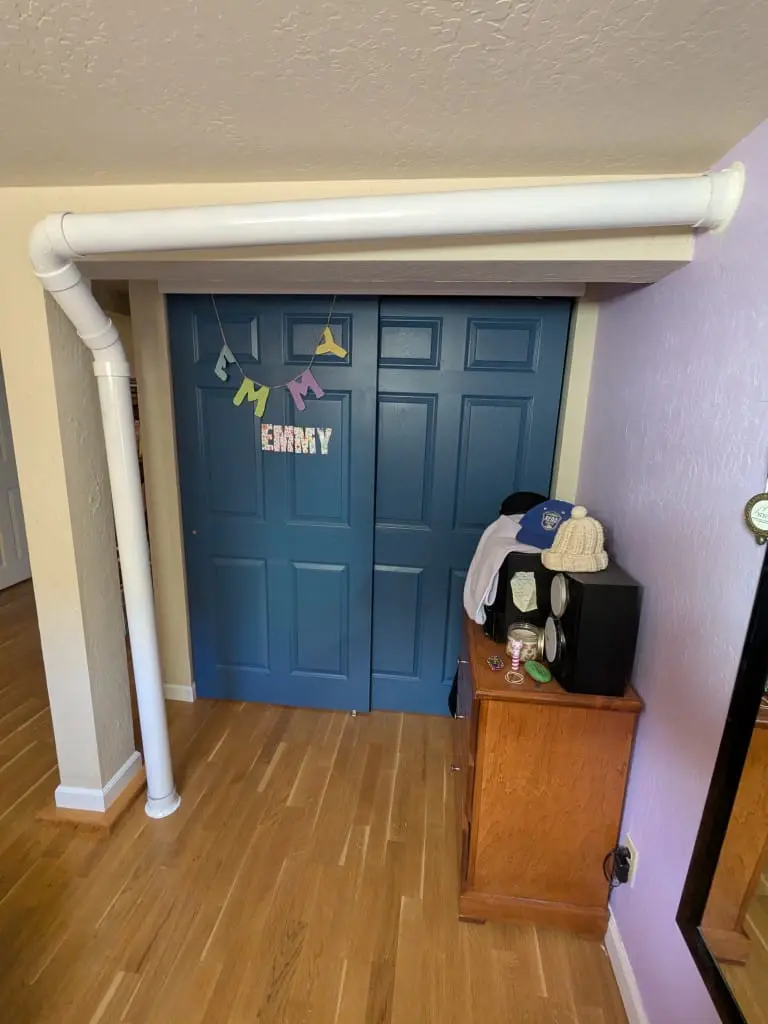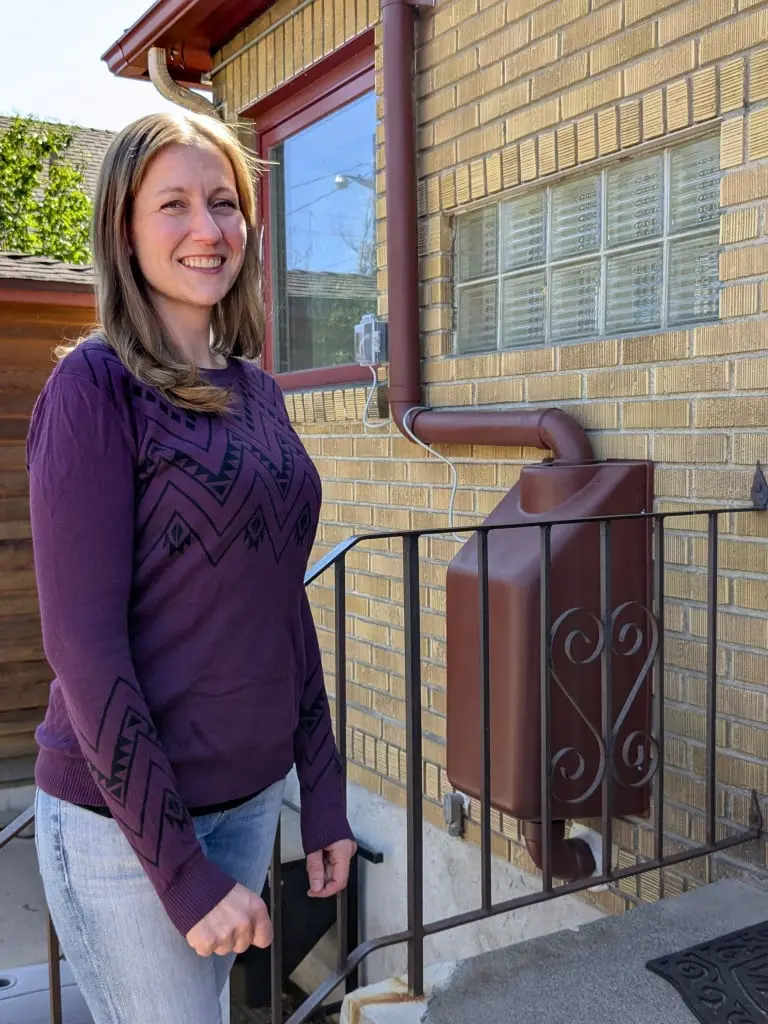Last updated on August 19th, 2025
The odorless gas has the potential to kill, so it’s critical to stay aware and safe
by Mike Escobar, the Sierra Nevada Ally
This story was produced by the Sierra Nevada Ally, a nonprofit, nonpartisan news outlet focused on civics, climate, and culture. License: Creative Commons Attribution-NoDerivatives 4.0 International.

Wyatt Denny is the radon mitigation program manager with Pinnacle Construction Consultants. The title may seem innocuous enough, but the job is serious.
“I’ve seen teenage kids die or have lung cancer,” Denny said. “These kids weren’t smoking, and there’s no reason for them to have lung cancer.”
Denny is talking about radon, an odorless and toxic gas.
The United States Environmental Protection Agency (EPA) describes radon as a radioactive gas that forms naturally when certain radioactive metals, such as uranium, break down in rocks, soil, and groundwater. It is the number one cause of lung cancer in nonsmokers, with higher concentrations and longer exposures significantly increasing this risk.
Given Nevada’s numerous mountain ranges and unique geologic history, the state contains more surface uranium than any other state in the US. This gives Nevada the unfortunate honor of having most of its counties labeled by the EPA as either Zone 1 or Zone 2 regions, meaning there is a high or moderate potential for radon exposure. This is not problematic outdoors, since open spaces and circulating air currents negate radon’s effects. Indoors, however, radon enters homes, schools, and workplaces via cracks and gaps in buildings.
Chris Kelly, program manager with the Nevada Radon Education Program, University of Nevada Reno – Extension, is passionate about educating the public on the dangers of radon and how everyone can counter this threat. Her program educates Nevadans about the health risks of having too much radon in their homes, and it offers a variety of free or low-cost literature, maps, educational presentations, and radon test kits.
“The number one thing is people need to test,” Kelly said. “People need to know the radon level of where they’re living, working, and sending their kids to school.”
Kelly said that approximately 25% of homes in Washoe County test for elevated radon levels, with the highest radon level in Nevada ever recorded being in Reno’s 89509 zip code. High-radon areas also include Minden, Incline Village, Crystal Bay, and Verdi.
The EPA states that there is no known safe level of exposure to radon. However, it suggests that people consider fixing any building that tests between 2-4 picocuries per liter (pCi/L) of radon concentration, and it strongly recommends fixing any location that tests above 4 pCi/L. The EPA estimates that at a level of 4 PCi/L, the risk of developing lung cancer from radon exposure for people who have never smoked is equal to their risk of dying in a car crash. This risk increases significantly with higher radon levels, particularly for smokers.

Kelly noted many of us spend most of our time indoors nowadays, unknowingly exposing ourselves to often-high levels of this ever-present, radioactive gas. Especially given Nevada’s geology, she advocates for all homes and schools in the state to be tested. Currently, Nevada schools are not required to have radon levels tested.
“At a level of 4 picocuries per liter of air, a school child would receive ten times as much radiation than if they were to take a field trip to a nuclear power plant,” Kelly said.
Although the causal connection between radon and lung cancer is well established, Kelly also cited new research establishing a connection between radon exposure, childhood leukemia, and strokes in women. This direct correlation was just established as of 2024.
Compounding these potential exposures in school are exposures in the home. One of the places Kelly said this testing should happen is during real estate transactions, so that soon-to-be homeowners can have open and honest conversations with the seller regarding appropriate mitigation.
That’s because Nevada as a whole tests high for radon levels, and areas in Washoe County and the Lake Tahoe region have recorded some of the highest levels statewide. The state’s high radon levels make it worth everyone’s while to get indoor spaces tested and, depending on results, mitigated.

Fixing a home to reduce radon levels is sometimes known by its technical name, “radon mitigation.” It means creating structural improvements to buildings, such as sealing crawl spaces and creating air pathways to vent radon with the help of special fans that operate consistently.
It’s essentially what Wyatt Denny does in his work with Pinnacle Construction Consultants. Denny said the cost of mitigating a home currently starts at approximately $3,000 but can increase from there, depending on a building’s total square footage and the nature of the floor plan. Although not inexpensive, Denny said these systems last for 5-10+ years before the fans need replacing, and they are a worthwhile investment in both homes and health.
“I used to think it [radon] was snake oil before I got into this industry … you couldn’t smell it or see it,” Denny said.
However, once he learned about the threat and saw firsthand the effect radon could have on individuals, he quickly changed his mind. He now sees radon mitigation as not just addressing the threat of cancer, but also improving general health. The purer air in a well-ventilated home can contribute to healthier immune systems, decreased risk of respiratory infections, and even improved sleep quality.
“The new clean air quality created is tremendous,” Denny said. “The mitigation system addresses radon, but it also cleans out other contaminants such as mold, spores, and bacteria.”
Chris Kelly with the Nevada Radon Education Program said that although mechanically inclined people can learn to do radon mitigation themselves through resources found in libraries and online, hiring certified professionals is the safest route.
“Incorrectly done work can damage the home and actually lead to increased radon levels and carbon monoxide levels,” Kelly said. “You could defeat the whole purpose and cause radon gas to be more trapped in the home rather than venting it out properly.”
Ultimately though, Kelly said the most important thing is to be aware of the risk. In the U.S., 1 in 5 cancer deaths are from lung cancer. That’s more than colon, breast, and prostate cancers combined.
“We need more education about non-smoking causes of lung cancer,” Kelly said. “This is such a health concern, especially in the state of Nevada.”
What You Can Do
- Quit smoking. Although anyone can suffer the detrimental effects of radon exposure, smokers are at even greater risk of lung cancer, since the body is already under stress. Talk with your doctor about smoking cessation resources. The American Lung Association also has excellent resources and a dedicated telephone helpline for those looking to quit.
- Test your home and anywhere else you spend significant amounts of time indoors. The University of Nevada Reno – Extension program offers a list of places where you can obtain free or low-cost test kits throughout the year. Even the least handy person can perform these tests easily.
- If your home tests high, mitigate.If your test shows levels of radon at or above 4 pCi/L, UNR – Extension recommends that you retest to confirm the result. If your second test comes back high once more, contact a licensed mitigation specialist to get professional remediation done. This website contains a list of certified radon mitigation contractors servicing both Northern and Southern Nevada.
- Educate yourself and your circle. The more people that know about radon, the more precautions they can take on an individual level. Ultimately, greater education leads to more collective action toward mitigating more homes, schools, and workplaces. Kelly advises everyone to become an informed citizen and an advocate for radon-reducing measures.
- Keep a clean home and functional Heating, Ventilation, and Air Conditioning (HVAC) system. In the same way that a refrigerator cannot properly cool items when packed too tightly, air cannot properly circulate indoors if there is a lot of clutter interfering with the flow. This can result in higher radon concentrations.
- Get outdoors. Even the best organized indoor spaces will never have the ample air circulation found in nature. To the extent you can, consider enjoying the parks, hiking trails, or even patio/backyard gardens Nevada offers. Beyond minimizing radon exposure, you’ll reap the benefits of exercise and natural sunlight–a win-win for your health.
To learn more about radon, how to get a test kit, and where to find a certified radon mitigator, please visit the Nevada Radon Education Program.




